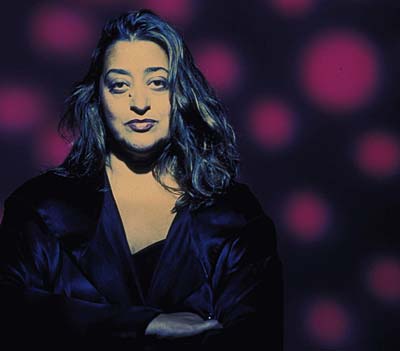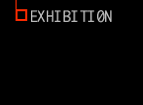 |
 |
Zaha Hadid |
Zaha Hadid
was born in Baghdad (Iraq) in 1950. After receiving a master
in mathematics at the American University of Beirut (1971),
she started studying at the Architectural Association in London,
where she graduated in 1977. A member of the Office for Metropolitan
Architecture with Rem Koolhaas and Elia Zenghelis, she taught
at the Architectural Association and continued her academic
activities in a number of universities in England and in the
United States.
She began
her professional career
in 1979 with a project for an apartment in 59 Eaton Place,
London, which received the top Architectural Design award
in 1982. But she achieved celebrity in 1983, when she won
the competition for the Peak Club in Hong Kong.
This was followed by many other
winning projects: in the competition
for the KurfŸrstendamm 70, Berlin (1986), for the Kunst
Media Centre in DŸsseldorf (1989-1993), for the Cardiff
Bay Opera House (1996), for the Thames Water/Royal Academy
Habitable Bridge in London (1996), for the Rosenthal Center
for Contemporary Art in Cincinnati (1998), and for the Centro
Nazionale per le Arti Contemporanee in Rome (1998).
Important completed works
include: "The Great Utopia" exhibition at the Guggenheim
Museum in New York (1992), the Vitra Fire Station (1991-1993)
and the Landesgartenschau (LF One) pavilion in Weil am Rhein
(1997-1999), a block of council housing for the IBA complex
in Berlin (1993), and the Mind Zone in the Millennium Dome
in London (1998-2000).
She has also done important work in the field of design, fashion,
and art, including the stage sets for the Charleroi Danses
company and concert settings. Ever since the Architectural
Association exhibition in 1983, her work has been published
and exhibited on numerous occasions and has often been at
the centre of international debate.
Zaha Hadid lives and works in London.
|






